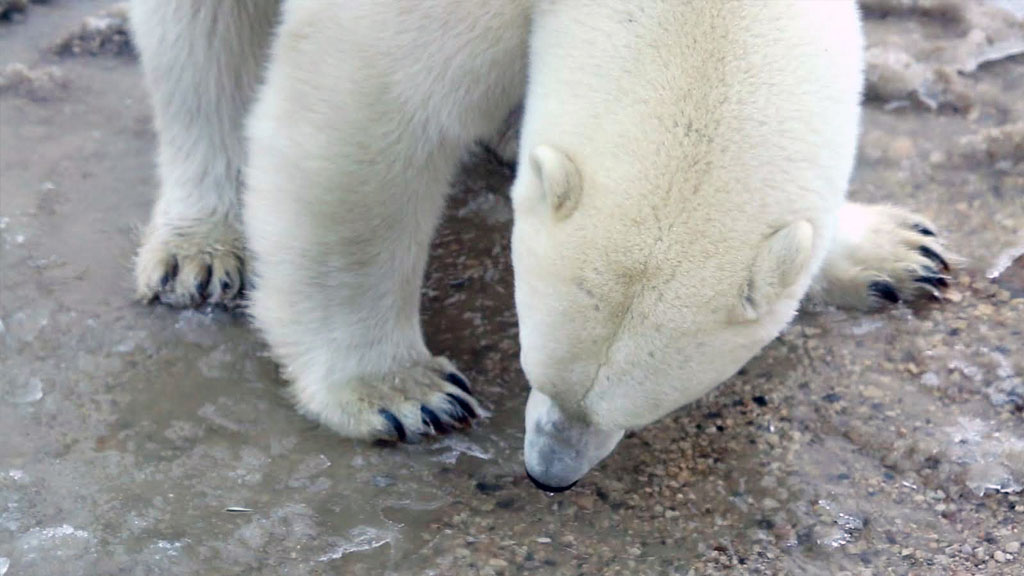Polar Bear experts are on hand during Polar Bear Cam season to weigh in on your frequently asked questions!
Today’s Question: What’s special about polar bear paws?
Like the rest of a polar bear’s body, its paws are perfectly adapted for life on ice. Strong limbs and huge forepaws act as paddles to propel these marine mammals through the water, and their back paws act like rudders. Black footpads on the bottom of each paw are covered by small, soft bumps known as papillae. Papillae grip the ice and keep the bears from slipping. Tufts of fur between their toes and footpads may help with purchase as well, as can their claws.
“Their non-retractable claws dig into snow and ice like icepicks, increasing their traction, but their primary use of these two-inch claws is catching and holding slippery prey. Paws measure up to 12 inches across (31 centimeters) and help distribute weight when treading on thin ice and across deep snow. They also make adult bears powerful swimmers,” said Geoff York, Polar Bears International’s senior director of conservation and a polar bear biologist.



